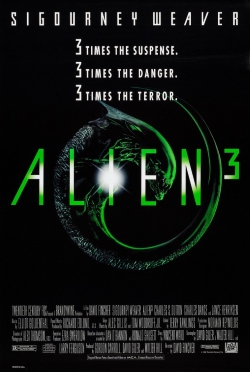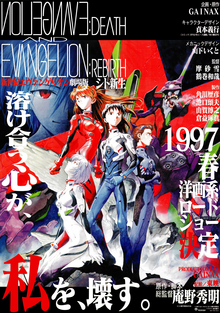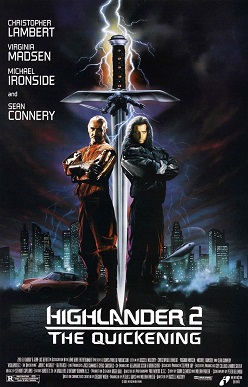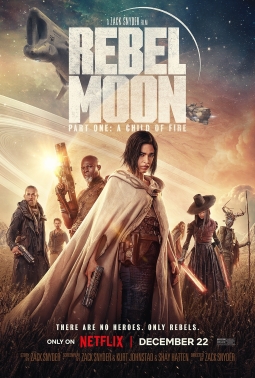
Blade Runner is a 1982 science fiction film directed by Ridley Scott from a screenplay by Hampton Fancher and David Peoples. Starring Harrison Ford, Rutger Hauer, Sean Young, and Edward James Olmos, it is an adaptation of Philip K. Dick's 1968 novel Do Androids Dream of Electric Sheep? The film is set in a dystopian future Los Angeles of 2019, in which synthetic humans known as replicants are bio-engineered by the powerful Tyrell Corporation to work on space colonies. When a fugitive group of advanced replicants led by Roy Batty (Hauer) escapes back to Earth, burnt-out cop Rick Deckard (Ford) reluctantly agrees to hunt them down.

Dawn of the Dead is a 1978 zombie horror film written, directed, and edited by George A. Romero, and produced by Richard P. Rubinstein. An American-Italian international co-production, it is the second film in Romero's series of zombie films, and though it contains no characters or settings from the preceding film Night of the Living Dead (1968), it shows the larger-scale effects of a zombie apocalypse on society. In the film, a phenomenon of unidentified origin has caused the reanimation of the dead, who prey on human flesh. David Emge, Ken Foree, Scott Reiniger, and Gaylen Ross star as survivors of the outbreak who barricade themselves inside a suburban shopping mall amid mass hysteria.

Dune is a 1984 American epic space opera film written and directed by David Lynch and based on the 1965 Frank Herbert novel Dune. It was filmed at the Churubusco Studios in Mexico City. The soundtrack was composed by the rock band Toto, with a contribution from Brian Eno. Its large ensemble cast includes Kyle MacLachlan's film debut as young nobleman Paul Atreides, Patrick Stewart, Brad Dourif, Dean Stockwell, Virginia Madsen, José Ferrer, Sean Young, Sting, Linda Hunt, and Max von Sydow.

Alien 3 (stylized as ALIEN3) is a 1992 American science fiction horror film directed by David Fincher and written by David Giler, Walter Hill, and Larry Ferguson, from a story by Vincent Ward. It stars Sigourney Weaver, reprising her role as Ellen Ripley. It is the third installment of the Alien franchise and led to a sequel, Alien Resurrection (1997).

Kingdom of Heaven is a 2005 epic historical drama film directed and produced by Ridley Scott and written by William Monahan. It features an ensemble cast including Orlando Bloom, Eva Green, Jeremy Irons, David Thewlis, Brendan Gleeson, Marton Csokas, and Liam Neeson.
A test screening is a preview screening of a film or television series before its general release to gauge audience reaction. Preview audiences are selected from a cross-section of the population and are usually asked to complete a questionnaire or provide feedback in some form. Harold Lloyd is credited with inventing the concept, having used it as early as 1928. Test screenings have been recommended for starting filmmakers "even if a film festival is fast approaching".

Legend is a 1985 American epic dark fantasy adventure film directed by Ridley Scott, and starring Tom Cruise, Mia Sara, Tim Curry, David Bennent, Alice Playten, Billy Barty, Cork Hubbert and Annabelle Lanyon. The film revolves around Jack, a pure being who must stop the Lord of Darkness who plots to cover the world with eternal night.

Neon Genesis Evangelion: Death & Rebirth, also romanized in Japan as Evangelion: Death and Evangelion: Rebirth, is a 1997 Japanese adult animated science fiction psychological drama film. It is the first installment of the Neon Genesis Evangelion feature film project and consists of two parts. The project, whose overarching title translates literally to New Era Evangelion: The Movie, was released in response to the success of the TV series and a strong demand by fans for an alternate ending. Its components have since been re-edited and re-released several times.

Color of Night is a 1994 American erotic mystery thriller film produced by Cinergi Pictures and released in the United States by Buena Vista Pictures. Directed by Richard Rush, the film stars Bruce Willis and Jane March.
A fan edit is a version of a film modified by a viewer, that removes, reorders, or adds material in order to create a new interpretation of the source material. This includes the removal of scenes or dialogue, replacement of audio and/or visual elements, and adding material from sources such as deleted scenes or even other films.

Highlander II: The Quickening is a 1991 American-French-Argentinian science fiction film directed by Russell Mulcahy and starring Christopher Lambert, Virginia Madsen, Michael Ironside and Sean Connery. It is the second installment in the Highlander film series and sequel to the 1986 fantasy film Highlander. Set in the year 2024, the plot concerns Connor MacLeod, who regains his youth and immortal abilities and must free Earth from the Shield, an artificial ozone layer that has fallen under the control of a corrupt corporation.

Superman II: The Richard Donner Cut is a 2006 re-edited director's cut of the 1980 superhero film Superman II. It is a sequel to Richard Donner's 1978 film Superman, based on the DC Comics superhero of the same name, and stars Gene Hackman, Christopher Reeve, and Marlon Brando. This alternate cut was edited by Michael Thau and was overseen and completed by Donner himself. It features a significant amount of discarded footage, alternate takes, and story elements not featured in the theatrical version.

Seven different versions of Ridley Scott's 1982 science fiction film Blade Runner have been shown, either to test audiences or theatrically. The best known versions are the Workprint, the US Theatrical Cut, the International Cut, the Director's Cut, and the Final Cut. These five versions are included in both the 2007 five-disc Ultimate Collectors Edition and 2012 30th-Anniversary Collector's Edition releases.

Alien is a 1979 science fiction horror film directed by Ridley Scott and written by Dan O'Bannon. Based on a story by O'Bannon and Ronald Shusett, it follows the crew of the commercial space tug Nostromo, who, after coming across a mysterious derelict spaceship on an uncharted planetoid, find themselves up against a deadly and aggressive extraterrestrial loose within their vessel. The film stars Tom Skerritt, Sigourney Weaver, Veronica Cartwright, Harry Dean Stanton, John Hurt, Ian Holm, and Yaphet Kotto. It was produced by Gordon Carroll, David Giler, and Walter Hill through their company Brandywine Productions and was distributed by 20th Century-Fox. Giler and Hill revised and made additions to the script; Shusett was the executive producer. The Alien and its accompanying artifacts were designed by the Swiss artist H. R. Giger, while concept artists Ron Cobb and Chris Foss designed the more human settings.

Donnie Darko: The Director's Cut is a 2004 re-cut version of Richard Kelly's directorial debut, Donnie Darko. A critical success but a commercial failure when first released in 2001, Donnie Darko grew in popularity through word-of-mouth due to strong DVD sales and regular midnight screenings across the United States. As a result of this growth, Kelly was approached by Bob Berney, president of the distributor Newmarket Films, who suggested that the film be rereleased. Kelly proposed producing a director's cut, and was given $290,000 to create what he called his interpretation of the original film. Donnie Darko was subsequently described as being the first "flop" to be given a director's cut.
Blade Runner is an American science fiction media franchise originating from the 1968 novel Do Androids Dream of Electric Sheep? by Philip K. Dick, about the character of Rick Deckard. The book has been adapted into several media, including films, comics, a stage play, and a radio serial. The first film adaptation was Blade Runner, directed by Ridley Scott in 1982. Although the film initially underperformed at the American box office, it became a cult classic, and has had a significant influence on science fiction. A novelization and a comic adaptation of the film were released in the same year. From 1995 to 2000, three novels serving as sequels to both Blade Runner and the original novel were written by K. W. Jeter, a friend of Dick's. A film sequel to Blade Runner, Blade Runner 2049, was released in 2017. To celebrate the 30th anniversary of Blade Runner in 2012, a short film was released, and in the lead up to the release of Blade Runner 2049, several more short films detailing events that occurred between 2019 and 2049 were released. The influence of the franchise has helped spawn the cyberpunk genre.
The 2017 film Justice League had a troubled production history, undergoing major changes before and during production, including a change in directors. This resulted in the theatrical release being markedly different from its conception in pre-production and principal photography.

Zack Snyder's Justice League is the 2021 director's cut of the 2017 American superhero film Justice League, the fifth film set within the DC Extended Universe (DCEU) based on the team of the same name appearing in DC Comics publications. It is intended to match director Zack Snyder's original vision for the film, prior to his departure from the production and subsequent studio interference. The film follows Batman, Wonder Woman, Cyborg, Aquaman, the Flash, and Superman as they form an alliance to stop the extradimensional New God Steppenwolf and his army of Parademons from conquering Earth for his overlord Darkseid.

Zack Snyder's Justice League (Original Motion Picture Soundtrack) is the soundtrack to the film of the same name, itself a director's cut of the 2017 theatrical film which had its own soundtrack. Tom Holkenborg, also known as Junkie XL, composed the film's score; he had previously worked on a score for the theatrical version of Justice League, before being replaced by Danny Elfman following original director Zack Snyder's departure and Joss Whedon's arrival. Upon Snyder getting the chance to finish and release his version of the film, Holkenberg was brought back and decided to rescore the film from scratch. The album was released via WaterTower Music on March 18, 2021, the same day as the film's release, and was later released as a limited-edition 7-disc vinyl set on April 14. The film's score is notable as the longest in film history at nearly four hours long.

Rebel Moon – Part One: A Child of Fire, or simply Rebel Moon, is a 2023 American epic space opera film directed by Zack Snyder from a screenplay he co-wrote with Kurt Johnstad and Shay Hatten. Its ensemble cast features Sofia Boutella, Djimon Hounsou, Ed Skrein, Michiel Huisman, Doona Bae, Ray Fisher, Charlie Hunnam, and Anthony Hopkins. The film is set in a fictional galaxy ruled by the imperialistic Motherworld, whose military, the Imperium, threatens a farming colony on the moon of Veldt. Kora, a former Imperium soldier, ventures on a quest to recruit warriors from across the galaxy to make a stand against the Imperium before they return to Veldt.















